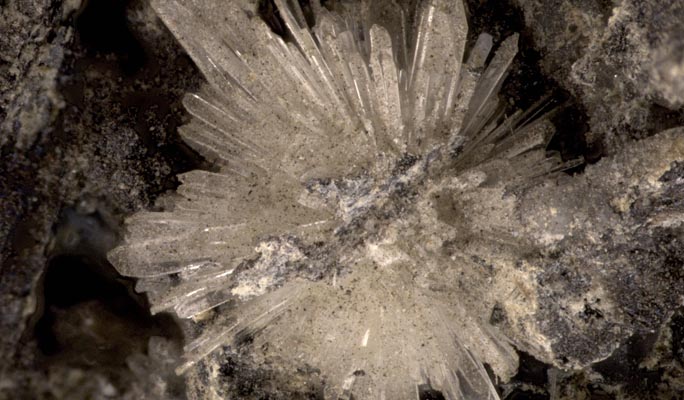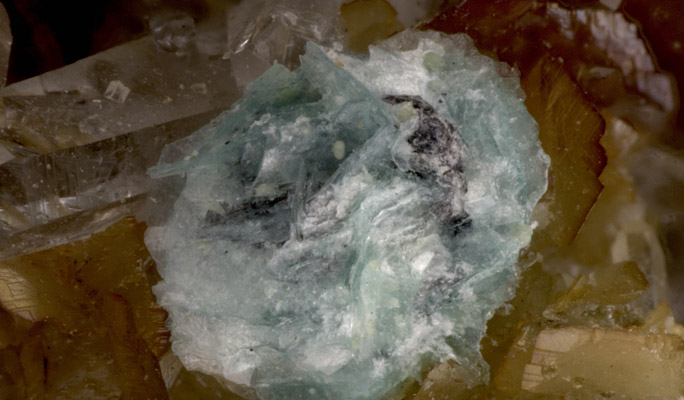Mineralogical Research

Peretaite: Pereta (GR), Tuscany, Italy
The Museum of Natural History has a long tradition of mineralogical research, which began in the early 1900s and involved various fields of mineralogy. Between the 1950s and 1960s, the Museum devoted particular attention to the sedimentary rocks of the northern Apennines and to the study of the borates class; in the 1970s and 1980s research on sulphide class minerals and on zeolites was developed; recently the research focused on the meteorites of the Museum collections and on the characterization of new mineralogical species, producing important results and publications in international journals.
New minerals
The recognition of a new mineral is a rather frequent event; every year 70 to 90 new species are identified in the world. Since 1959, there are rules dictated by the IMA, International Mineralogical Association, for the recognition of a new mineral. For a species to be considered as a new one, a report with the details of its structure, chemical composition and optical properties must be sent to IMA's Commission on New Minerals, Nomenclature and Classification which gives formal approval.
The name is generally attributed in honor of a person known in the mineralogy or of the place of origin of the sample. The reference sample, called holotype, must be deposited in a structure that provides adequate guarantees both in terms of scientific competence and of conservation.
The Museum of Natural History is the repository of numerous holotypes.

Bottinoite: Bottino Mine, Seravezza, Apuane Alps (Lucca), Tuscany, Italy
The discovery of natural quasicrystals
Among the most interesting results of the research on new species within the Museum, there was the discovery, in 2011, of the first quasicrystal found in nature, the Icosahedrite. Quasicrystals had already been synthesized in the laboratory in 1982 by Dan Shechtman, who, in 2011, obtained the Nobel Prize for chemistry because of the possible applications of this work in energy saving: the atomic structure of the quasicrystals - a set of trigonal symmetries that simulate pentagonal symmetry - makes them very efficient in conducting heat.
In 2015, another species of quasicrystal, the Decagonite, coming from the same locality as the Icosahedrite, was identified. Its holotype was then donated to the Museum of Natural History.
The findings of the quasicrystals allowed, together with laboratory simulations, to confirm the scientific hypotheses made on their extraterrestrial origin. A violent collision between asteroids occurred at the dawn of the Solar System may have been the source of the energy necessary for their formation.
SMA contact person: Vanni Moggi Cecchi
Last update
07.09.2021
